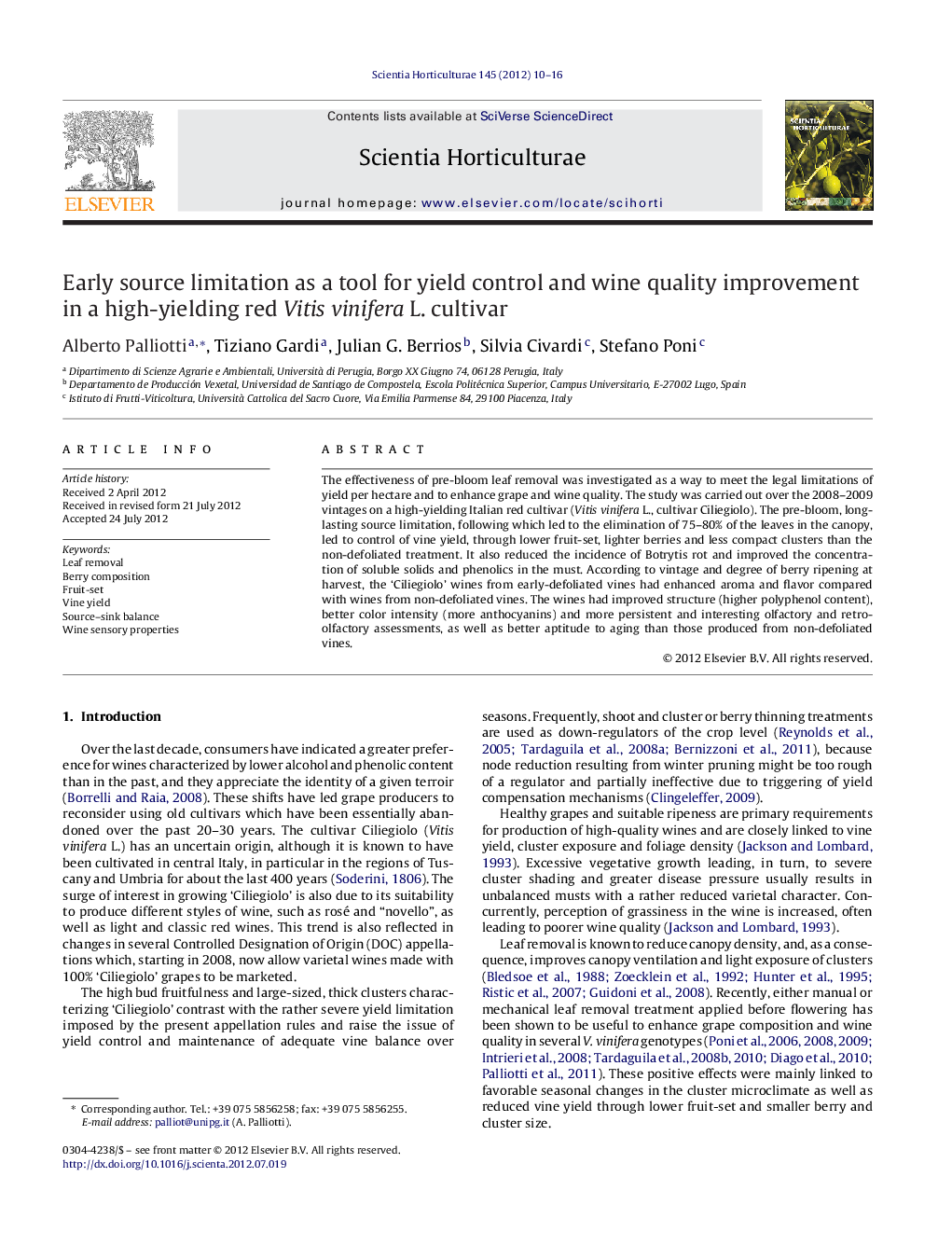| Article ID | Journal | Published Year | Pages | File Type |
|---|---|---|---|---|
| 4567495 | Scientia Horticulturae | 2012 | 7 Pages |
The effectiveness of pre-bloom leaf removal was investigated as a way to meet the legal limitations of yield per hectare and to enhance grape and wine quality. The study was carried out over the 2008–2009 vintages on a high-yielding Italian red cultivar (Vitis vinifera L., cultivar Ciliegiolo). The pre-bloom, long-lasting source limitation, following which led to the elimination of 75–80% of the leaves in the canopy, led to control of vine yield, through lower fruit-set, lighter berries and less compact clusters than the non-defoliated treatment. It also reduced the incidence of Botrytis rot and improved the concentration of soluble solids and phenolics in the must. According to vintage and degree of berry ripening at harvest, the ‘Ciliegiolo’ wines from early-defoliated vines had enhanced aroma and flavor compared with wines from non-defoliated vines. The wines had improved structure (higher polyphenol content), better color intensity (more anthocyanins) and more persistent and interesting olfactory and retro-olfactory assessments, as well as better aptitude to aging than those produced from non-defoliated vines.
► Early leaf removal was assessed to limit yield and improve quality in two V. vinifera cultivars. ► Treatments were applied as control and removal of the first six basal leaves on each shoot pre-bloom. ► Defoliation reduced yield and cluster thickness while improving sugar and phenolics. ► Wines from defoliated vines scored higher at tasting and had better attitude to aging.
